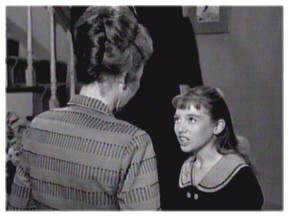

Scientists today are working on making "invisibility cloaks" that obscure objects by bending light waves around them, while 3D printing technology is becoming cheaper and more mainstream.

The 1963 episode "Valley of the Shadow," for example, features a device that manipulates atoms to make objects disappear or appear.
#Twilight zone i sing the body electric series
More than 50 years since it first aired, re-watching the series reveals that many of the technologies and ideas it imagined as supernatural in the 1960s are commonplace or at least conceivable today-including driverless cars, flat-screen televisions, human-like robotics, government surveillance, and more. Yet now that we're well into the “next century” that was so distant to Serling, some of The Twilight Zone's more fantastical ideas and inventions have emerged in real life. I like to know what happens Thursday, not in the next century." The hardware that I use, I think, should be identifiable. Here's how he explained this idea in a 1970 interview: "I would probably shy away from the year 2500. Serling's outlook also meant he was more interested in imagining the world as it might actually become.

“If you can’t believe the unbelievability, then there’s something wrong in the writing,” he told a college class in 1975. Twilight Zone creator Rod Serling said that even in science fiction, he was most compelled by stories that were relatable first in human terms. The Twilight Zone is at its core an exploration of the human condition and commentary on how people cope with fear of the unknown. People Seek Out a Certain Kind of Person When They Are Happy Olga Khazanīut the series has endured for more than half a century because of how resonant it remains today. Atomic war, space exploration, government control, anxiety, and mortality are all common Twilight Zone themes. The series is celebrated as an acute reflection of a rare and intense moment in American history a space-age cult classic that captured the messy transition between post-World War II America and the chaotic 1960s. 31 at 8 a.m.Ĭritics tend to talk about The Twilight Zone like it’s trapped in amber. The Syfy network will continue the tradition for a 19th time this week, airing more than 80 episodes in 48 hours starting the morning of Dec. Though its original run spanned five seasons between 19, generations of new viewers have since discovered The Twilight Zone, its longevity at least partly buoyed by an annual marathon broadcast each New Year's dating back to 1994. Incidentally, composer Marius Constant dashed off the 30-second theme song in a single afternoon, according to The New York Times-but that melody has endured in our popular imagination just as the program has. While the theories about life Whitman preaches in his poetry may seem out dated, time and time again, we see pop culture bringing the poet back to life with new modern twists to his older but important ideas.More than half a century after it first aired, The Twilight Zone still has one of the most recognizable opening themes in television history: Doo-doo-doo-doo, doo-doo-doo-doo, doo-doo-doo-doo. Although Whitman clearly was not thinking about robots when writing this poem, The Twilight Zone does interestingly bring up the question of the poet’s body/soul relationship when the body itself is a complete human construction. The episode, although clearly fiction, does deal with a growing issue in our modern world, which is the growth of technology and the use of robots. I find that this episode of The Twilight Zone to not only be entertaining, but informative on how Whitman’s ideas are still inherently present today. Hence, even just having a body made up of all of the necessary components (as Whitman catalogues in his poem), a soul (or something like a soul) will also become present. Whitman writes, “O I say these are not the parts and poems of the body only,/but of the soul,/O I say now these are the soul!” In the episode, although the grandmother is made up of bionic parts, I would argue that by the end of the episode where she saves the daughter’s life, the grandmother portrays a soul-like quality. This episode, as does Whitman’s poem, explores the ideas of body and soul and how the two are ultimately connected. This episode presents viewers with a family who has just lost their mother and so they order a robotic grandmother to take care of them.
/cdn.vox-cdn.com/uploads/chorus_asset/file/10879457/IMG_20171121_203339.jpg)
#Twilight zone i sing the body electric tv
The TV show The Twilight Zone, as I discovered last year, has an episode with the same title as Whitman’s poem, which is based off of Ray Bradbury’s short story. By Kristen Walczak on Januin Uncategorizedįor this blog post, I am going to go beyond Walt Whitman in order to examine both the meaning of the poem “I Sing the Body Electric” and Walt’s clear influence on pop culture.


 0 kommentar(er)
0 kommentar(er)
